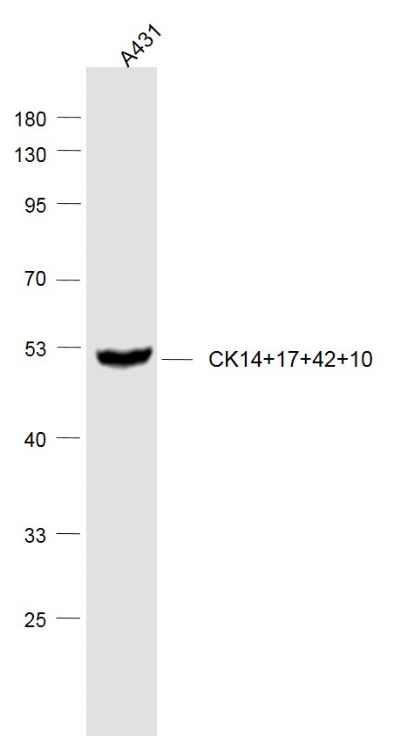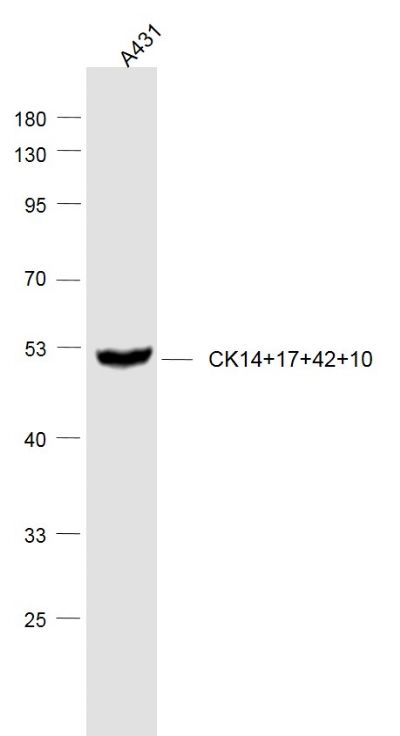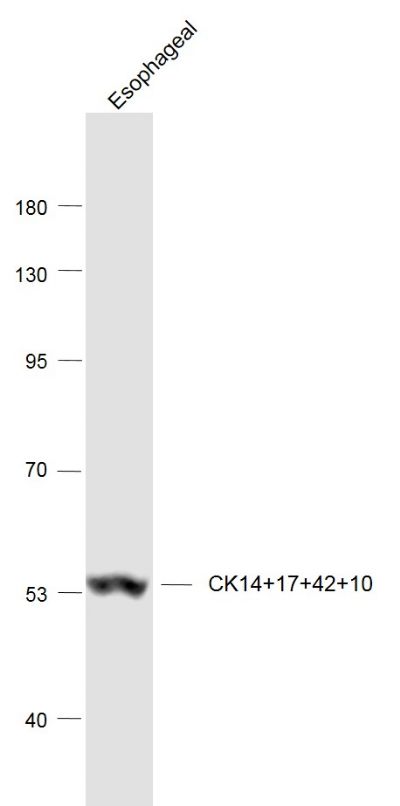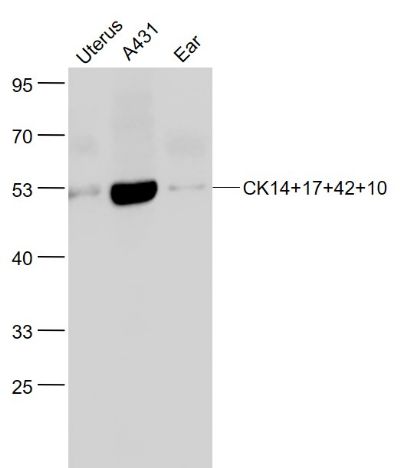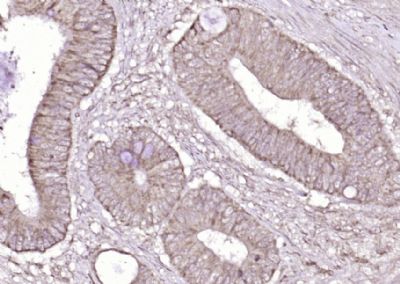Sample:
A431(Human) Cell Lysate at 30 ug
Primary: Anti-CK14+17+42+10 (SL22150R) at 1/1000 dilution
Secondary: IRDye800CW Goat Anti-Rabbit IgG at 1/20000 dilution
Predicted band size: 52 kD
Observed band size: 52 kD
Sample:
A431(Human) Cell Lysate at 30 ug
Primary: Anti-CK14+17+42+10 (SL10196R) at 1/1000 dilution
Secondary: IRDye800CW Goat Anti-Rabbit IgG at 1/20000 dilution
Predicted band size: 52 kD
Observed band size: 52 kD
Sample:
Esophageal (Mouse) Lysate at 40 ug
Primary: Anti-CK14+17+42+10 (SL22150R) at 1/1000 dilution
Secondary: IRDye800CW Goat Anti-Rabbit IgG at 1/20000 dilution
Predicted band size: 52 kD
Observed band size: 52 kD
Sample:
Uterus (Mouse) Lysate at 40 ug
A431(Human) Cell Lysate at 30 ug
Ear (Mouse) Lysate at 40 ug
Primary: Anti- CK14+17+42+10 (SL22150R) at 1/1000 dilution
Secondary: IRDye800CW Goat Anti-Rabbit IgG at 1/20000 dilution
Predicted band size: 52 kD
Observed band size: 52 kD
Paraformaldehyde-fixed, paraffin embedded (human colon carcinoma); Antigen retrieval by boiling in sodium citrate buffer (pH6.0) for 15min; Block endogenous peroxidase by 3% hydrogen peroxide for 20 minutes; Blocking buffer (normal goat serum) at 37°C for 30min; Antibody incubation with (CK14+17+42+10) Polyclonal Antibody, Unconjugated (SL22150R) at 1:200 overnight at 4°C, followed by operating according to SP Kit(Rabbit) (sp-0023) instructionsand DAB staining.
|
